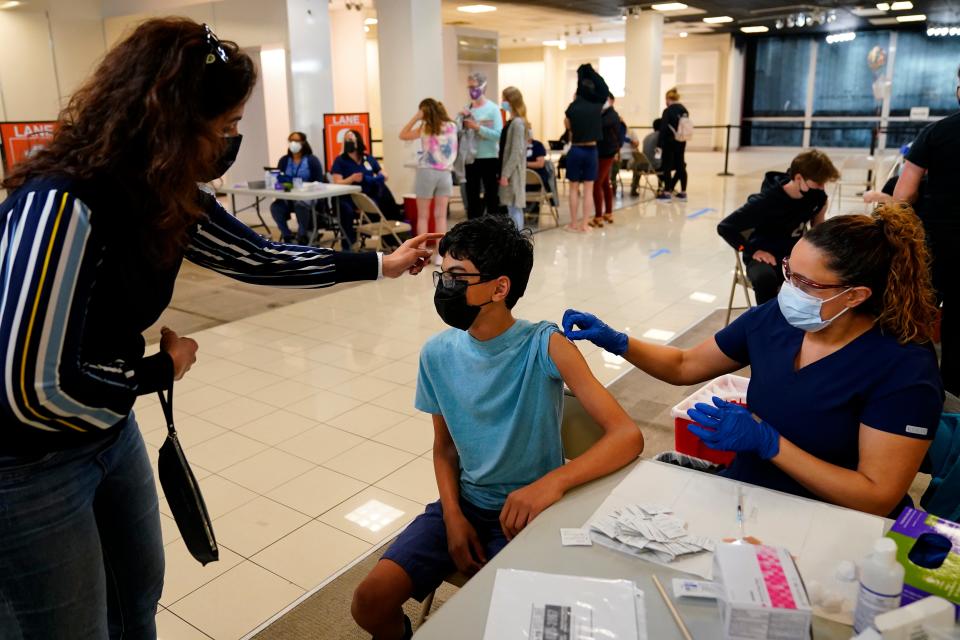Rural COVID-19 vaccination rates lag behind urban areas as access, hesitancy remain barriers

Vaccination rates in rural America lagged urban counties during the first four months of the nation's concerted immunization push as challenges such as lack of access and vaccine hesitancy persisted, a new study found.
A Centers for Disease Control and Prevention analysis released Tuesday found 39% of rural adults received at least one vaccine dose, compared with 46% of urban adults. Rural vaccination rates also were lower than urban rates among younger adults, seniors, men and women.
Alan Morgan, CEO of National Rural Health Association, said the nation's hundreds of small towns are vulnerable. Not only do rural communities often lack the health care resources of bigger cities, they also have a population more susceptible to severe outcomes.
“The moment we’re in right now is overcoming vaccine hesitancy in a rural context,” Morgan said. “That’s the battle at hand.”
The analysis counted vaccination rates among adults who received their first dose of the Pfizer-BioNTech or Moderna COVID-19 vaccines or the single-dose Johnson & Johnson vaccine as of April 10 in 49 states and Washington, D.C.
In a possible sign rural residents could not access vaccines as easily as urban dwellers, about 15% of rural residents traveled outside their county to get a shot.
Experts said the early trend is concerning because rural residents face a greater risk of infection, severe illness or death from COVID-19.
"The counties that have lower uptake in the vaccines are also the ones who have been disproportionately hit by all those negative outcomes related to the COVID-19 pandemic," said Dr. Daniel Derksen, director of the Arizona Center for Rural Health at the University of Arizona.
More: States prepare for long grind as demand for COVID-19 vaccinations in US slows
In the early months of the immunization campaign, doses were restricted to health care workers and residents and staff of nursing homes before becoming more widely available to older adults and younger adults with high-risk health conditions. The study found rural counties reported about 67% of adults 65 and older received at least one dose, compared with 76% of urban seniors.
The initial rollout was challenging in rural parts of states such as Arizona because some smaller counties could not easily meet the cold-storage requirements for the Pfizer and Moderna doses, Derksen said. The single-dose J&J vaccine can be stored in normal refrigerators and is easier to distribute, Derksen said.
The report also cited vaccine hesitancy in rural communities as another barrier. About 21% of rural residents said they would "definitely not" get immunized compared with 10% of urban residents, according to a Kaiser Family Foundation poll in March.
However, an earlier poll found 86% of rural residents said they trust their own doctor or other health provider to give them reliable information about immunization.
In recent weeks, doses have been distributed to primary care doctors and federally qualified community health centers that serve rural and other underserved communities.
"We remain committed to listening and to reaching out to communities in every corner of the United States in our work to narrow these differences and to make sure that vaccine coverage is equitable, regardless of whether you live in rural or urban areas," Dr. Rochelle Walensky, director of the CDC, said at a news briefing Tuesday.
This article originally appeared on USA TODAY: Vaccine rates in rural US lag behind urban areas, CDC analysis finds

 money
money 